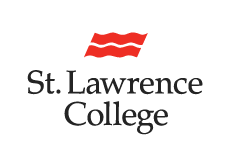Want to create interactive content? It’s easy in Genially!
Mask Training Outline 2022 Ver 2
communications
Created on January 10, 2022
Over 30 million people create interactive content in Genially
Check out what others have designed:
Transcript
EASTERN ONTARIO HEALTH UNIT
EASTERN ONTARIO HEALTH UNIT
LEEDS, GRENVILLE AND LANARK HEALTH UNIT
KFL&A PUBLIC HEALTH
When you wear a mask, you are protecting others. When others wear a mask, they are protecting you. According to the Public Health Agency of Canada (PHAC), masks can help:
- Contain your respiratory particles
- Prevent or reduce the amount of infectious respiratory particles you inhale, particularly when wearing a well-constructed, well-fitting mask.
SLC also requires anyone entering our campuses to provide proof of full vaccination or approved exemption and a negative antigen test result. This requirement is an additional layer of protection creating a safe environment to work and learn.
COVID-19 Mask Use
The effectiveness of non-medical masks varies based on mask material, construction, fit, and the user’s ability to use the mask as intended, including proper hand hygiene measures when donning and doffing the mask. Some non-medical masks can help prevent the spread of COVID-19 similarly to medical masks if they:
- Fit well to the user’s face
- Are large enough to completely and comfortably cover the nose, mouth, and chin without gaps
- Do not allow air to escape from edges
- Fit securely to the head with ties, bands, or ear loops. (Consider shaving facial hair shave short to fit the mask more closely to your face.)
- Be comfortable and not require frequent adjustments
- Maintain its shape after washing and drying (for reusable non-medical masks only)
- Have multiple layers, including at least two layers of breathable tightly woven fabric, such as cotton and
- An effective middle filter layer
logging in on your computer.
The effectiveness of non-medical masks varies based on mask material, construction, fit, and the user’s ability to use the mask as intended, including proper hand hygiene measures when donning and doffing the mask. Some non-medical masks can help prevent the spread of COVID-19 similarly to medical masks if they:
- Fit well to the user’s face
- Are large enough to completely and comfortably cover the nose, mouth, and chin without gaps
- Do not allow air to escape from edges
- Fit securely to the head with ties, bands, or ear loops (Consider shaving facial hair shave short to fit the mask more closely to your face)
- Be comfortable and not require frequent adjustments
- Maintain its shape after washing and drying (for reusable non-medical masks only)
Mask Facts: Non-Medical Masks (Face Coverings, Cloth Masks)
here.
Mask Facts: Non-Medical Masks (Face Coverings, Cloth Masks)
Some non-medical masks can help prevent the spread of COVID-19 similarly to medical masks if they:
- Have multiple layers, including at least two layers of breathable tightly woven fabric, such as cotton and
- An effective middle filter layer
infection when they:
- Are in close contact with people who are infected
- Can’t maintain a safe physical distance
- Do not have access to a physical barrier
to protect themselves from
worn by health care workers
Mask Facts: Medical/Procedural/Surgical Mask
Medical masks, also called procedural or surgical masks, are a form of Personal Protective Equipment (PPE) to prevent droplets and splashes from passing through the mask material. They are usually three layers and made out of more than one type of material. In Canada, medical masks are regulated, requiring international standards such as ASTM F2100 to be met, and are categorized as either Level 1, Level 2 or Level 3 based on protection offered and intended use. These masks are
Public Health Ontario
The PHAC
Both The PHAC and Public Health Ontario (PHO) continue to recommend that medical masks be reserved for:
- Anyone who has tested positive for or has symptoms of COVID-19
- People caring for someone who has tested positive or has symptoms of COVID-19
- People who live in an overcrowded setting with someone who has tested positive or has symptoms of COVID-19
- People who are at risk of more severe disease or outcomes from COVID-19
- People who are at higher risk of exposure to COVID-19 because of their living situation
- Healthcare Workers and First Responders
and
Both The PHAC and Public Health Ontario (PHO) continue to recommend that medical masks be reserved for:
- Anyone who has tested positive for or has symptoms of COVID-19
- People caring for someone who has tested positive or has symptoms of COVID-19
- People who live in an overcrowded setting with someone who has tested positive or has symptoms of COVID-19
- People who are at risk of more severe disease or outcomes from COVID-19
- People who are at higher risk of exposure to COVID-19 because of their living situation
- Healthcare Workers and First Responders
Mask Facts: Medical/Procedural/Surgical Mask
N95 and KN95 are a type of respirator. Similar to the recommendations made by PHAC and PHO for medical masks, KN95 and N95 respirators should be reserved for use by health care workers and first responders when providing direct care to COVID-19 patients. Effectiveness of these respirators also depends on mask material, mask construction, mask fit and the user’s ability to properly use the mask as intended, including proper hand hygiene measures when donning and doffing the mask.
Mask Facts: N95 and KN95 Respirators
properly worn
well-fitting,
well-constructed,
When layered with other recommended public health measures, a well-constructed, well-fitting, and properly worn mask can help prevent the spread of COVID-19.
How to Properly Select, Use, and Care for a Mask
